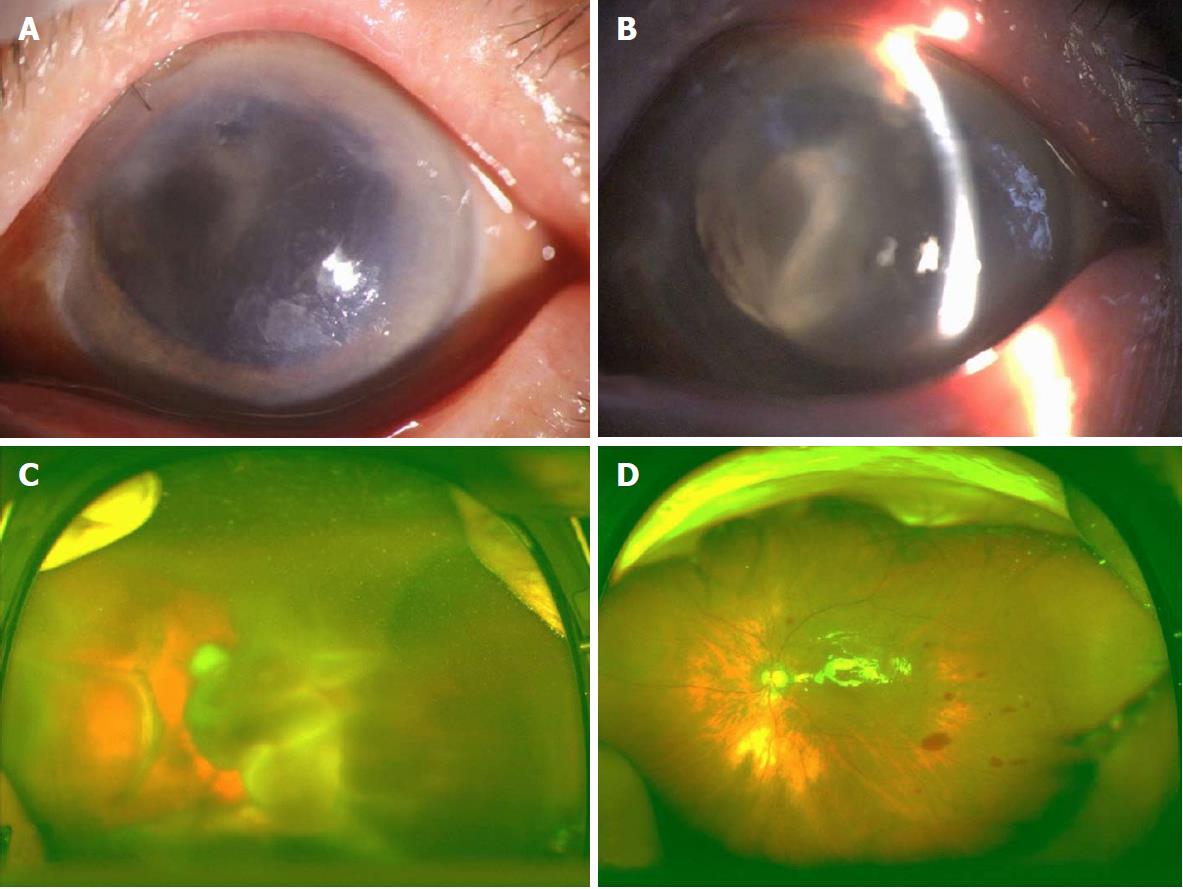Copyright
©The Author(s) 2018.
World J Clin Cases. Dec 6, 2018; 6(15): 1059-1066
Published online Dec 6, 2018. doi: 10.12998/wjcc.v6.i15.1059
Published online Dec 6, 2018. doi: 10.12998/wjcc.v6.i15.1059
Figure 1 Clinical findings in patient 1.
A: The cornea exhibited edema with local epithelial defect; B: The left eye was aphakic, and a prominent retinal detachment was visible through the pupil; C: A fundus examination revealed retinal detachment with choroidal detachment; D: Postoperatively, the retinal and choroidal detachment was completely reduced.
Figure 2 Clinical findings in patient 2.
A: An examination showed a deep anterior chamber with blood and cells, iridocoloboma, aphakia, capsule remnants, and a massive vitreous hemorrhage; B: A color ultrasound showed choroidal detachment; C: The day after PPV, a globular elevation of the choroidal detachment was clearly visible in the temporal quadrant; D: At 1 year later, the fundus was flat without any signs of choroidal detachment.
Figure 3 Clinical findings in patient 3.
A, B: An ultrasound showed choroidal detachment; C: A fundus examination revealed prominent choroidal detachment in four quadrants; D: Complete drainage of the suprachoroidal hemorrhage and flat retina was observed after vitrectomy was finished.
Figure 4 Clinical findings in patient 4.
A: An ultrasound showed massive suprachoroidal hemorrhage with choroidal detachment; B: The choroidal detachment was completely reduced after surgery.
Figure 5 The drainage process during surgery.
A: As soon as the infusion line was opened, a copious, thick flux of blood flowed out of the 20G cannula; B: The 20G cannula was left open throughout the surgery.
- Citation: Chai F, Ai H, Deng J, Zhao XQ. Sub-Tenon’s urokinase injection-assisted vitrectomy in early treatment of suprachoroidal hemorrhage: Four cases report. World J Clin Cases 2018; 6(15): 1059-1066
- URL: https://www.wjgnet.com/2307-8960/full/v6/i15/1059.htm
- DOI: https://dx.doi.org/10.12998/wjcc.v6.i15.1059

















